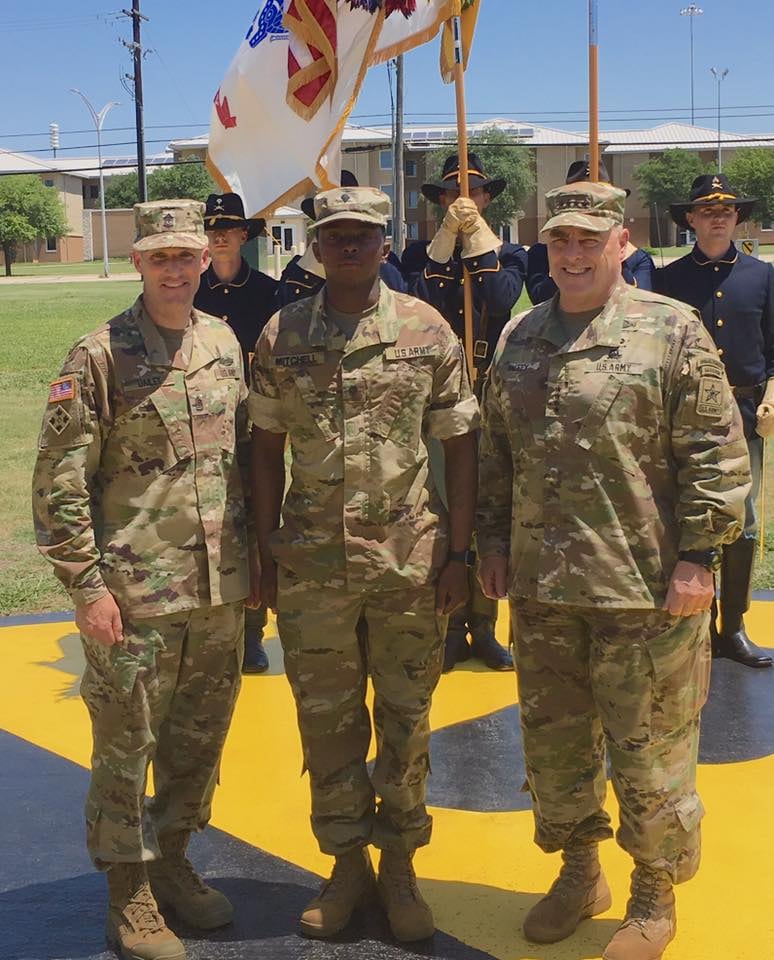(Editor's note: This story was first published at 6:44 p.m. June 29, 2016.)
Soldiers everywhere rejoice. Senior Army leaders have approved rolled sleeves across the force.
After a 10-day pilot at Fort Hood, Texas, Army Chief of Staff Gen. Mark Milley has decided to allow sleeve-rolling with the camo facing out. Lt. Gen. James McConville, the Army G-1, signed a memo Tuesday finalizing the change.
Sleeve-rolling will be at the commander's discretion, said Sergeant Major of the Army Dan Dailey. And there will be no time or seasonal limits as long as it's approved by your commander, he said, citing for example soldiers stationed in Hawaii, where the weather is warm pretty much all year.
"This is an indication of the fact that we listen to soldiers," Milley said.
Dailey agreed, calling Milley "the soldier's general."
But wait, there's more.
Soldiers also will be allowed cuff their sleeves, with the camo facing out, in a field environment, Dailey said.
"You can cuff your sleeves in temperate environments at the discretion of the commander and if there are no safety issues," Dailey said.
On Tuesday morning, before the Army's decision was announced, Army Secretary Eric Fanning was asked his opinion about rolled sleeves during an Association of the United States Army breakfast.
"I think for any number of reasons, I'm going to stay away from uniform issues," Fanning said, laughing. "But I'm watching closely, and if successful, I think we need a pilot on the civilian side as well."
According to the Army memo:
• Commanders may authorize rolled sleeves effective immediately.
• The memo applies to the Army Combat Uniform in the Universal Camouflage Pattern, Operational Camouflage Pattern or Operation Enduring Freedom Camouflage Pattern.
• Sleeves will be rolled with the camo facing out.
• Sleeves will be rolled neatly above the elbow but no more than 3 inches above the elbow.
• Sleeves may be down and cuffed upon commander approval and only during field training exercises.
Milley on June 16 announced the trial at Fort Hood after a soldier asked during a re-enlistment ceremony for permission to roll his sleeves.
Throughout the trial, Army leaders sought feedback from the force, including whether sleeves should be rolled with the camo facing out or in.
In an Army Times survey, which helped inform Milley's decision, more than 62 percent of the 54,641 votes were in favor of camo out. About 28 percent voted for camo in, while 10 percent voted against rolled sleeves.
The issue of rolled sleeves – the Marine Corps allows sleeve-rolling in the summer, as do the Air Force and Navy – has been a hot topic among soldiers for years. In February, when Army Times asked readers what they wanted Dailey to tackle during his second year on the job, several wrote in asking for permission to roll their sleeves in the summer.
In 2014, as an April Fool's joke, the website ArmyReenlistment.com announced that the Army was going to allow for rolled sleeves.
Soldiers have not been allowed to roll up their sleeves since the Army Combat Uniform replaced the Battle Dress Uniform in 2005. The Army’s official explanation was that the top was made to protect soldiers’ forearms from the sun, insects and other elements, and it’s not designed to be cuffed.
Tuesday’s decision to allow rolled sleeves will bring back the BDU way of rolling sleeves, with the camo facing out.
As for the added permission to cuff the uniform, Dailey said that came about when he was briefing senior leaders about the trial and subsequent survey of soldiers.
"We were looking at different versions of rolling and different situations," Dailey said, adding that soldiers have, in the past, unofficially been cuffing their sleeves. "It came up, we discussed it, and the Chief said, ‘hey, it doesn’t hurt anybody, it doesn’t cost anything.’"
Dailey said most of the soldier feedback he’s seen has been positive.
"It’s one of the big things soldiers are writing about on the Internet," he said. "They’re excited about it."
As for those opposed to rolled sleeves?
"I think we’re always going to have a difference of opinion when we do these things, and that’s OK," Dailey said. "I presented those facts to the Chief, and the overwhelming support from soldiers across the Army was really the big factor in this decision."
Michelle Tan is the editor of Army Times and Air Force Times. She has covered the military for Military Times since 2005, and has embedded with U.S. troops in Iraq, Afghanistan, Kuwait, Haiti, Gabon and the Horn of Africa.




